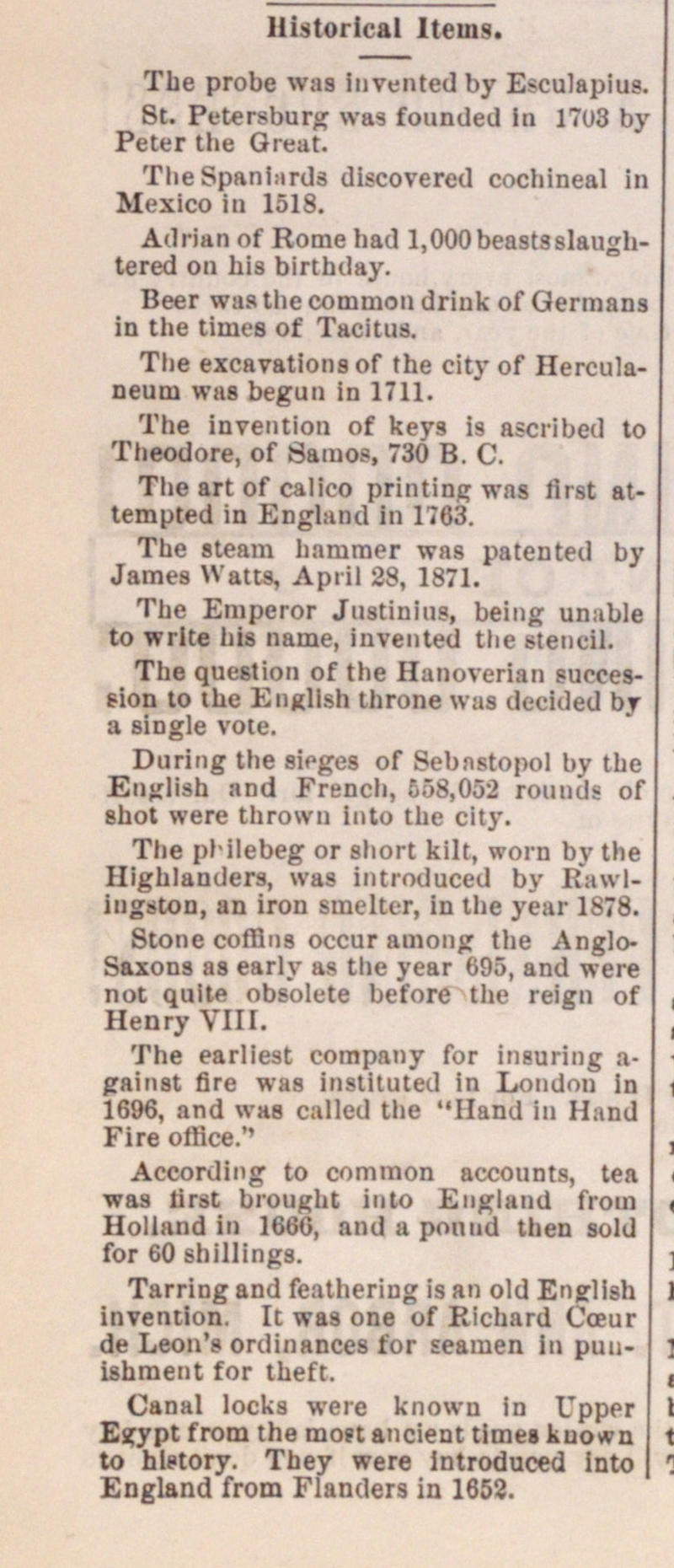Historical Items

The probé was inventedby Esculapius. 8t. Petersburg wus founded in 17U3 by Peter the Great. TheSpanl.irds discovered cocliineal n Mexico In 1518. Adrián of Rome had 1,000 beastsslaughtered on his birthday. Beer was tlie common drink of Germans in the times of Tacitus. The excavations of the citj' of Herculaneum was begun in 1711. The invention of keys is ascribed to Theodore, of Samo-s 730 B. C. The art of calicó printing was lirst attempted in Englund in 1763. The steam liamraer was patented by James Watts, April 28, 1871. The Emperor Justinius, being unable to write liis name, invented tlic stencil. The question of the Hunoverian succesiion to the English throne was decided b.r a single vote. During the sipges of Sebnstopol by the English and Frencli, L58,052 ronnds of shot were thrown into the city. The pHlebeg or short kilt, worn by the Highlanders, was introduced by Bawlingston, an iron smelter, in the year 1878. Stone coffins occur among the AngloSaxons as early as the year 695, and were not quite obsolete before the reign of Henry VIII. The earliest company for insuring against fire was inslltuted in Londoii in 1696, and was culleil the "Hand in Hand Fire office." According to common accounts, tea was lirst brought into Eiigland from Holland in 166G, and a pniinU then sold for 60 sliillings. Tarring and feathering is an old English invention. It was one of Richard Coeur de Leon's ordinances for seamen in puuUhraent for theft. Canal locks weie knowu in Upper Eypt from the most ancieat time kuon to hietory. They were introduced into England from Flanders in 1653.
Article
Subjects
Ann Arbor Courier
Old News